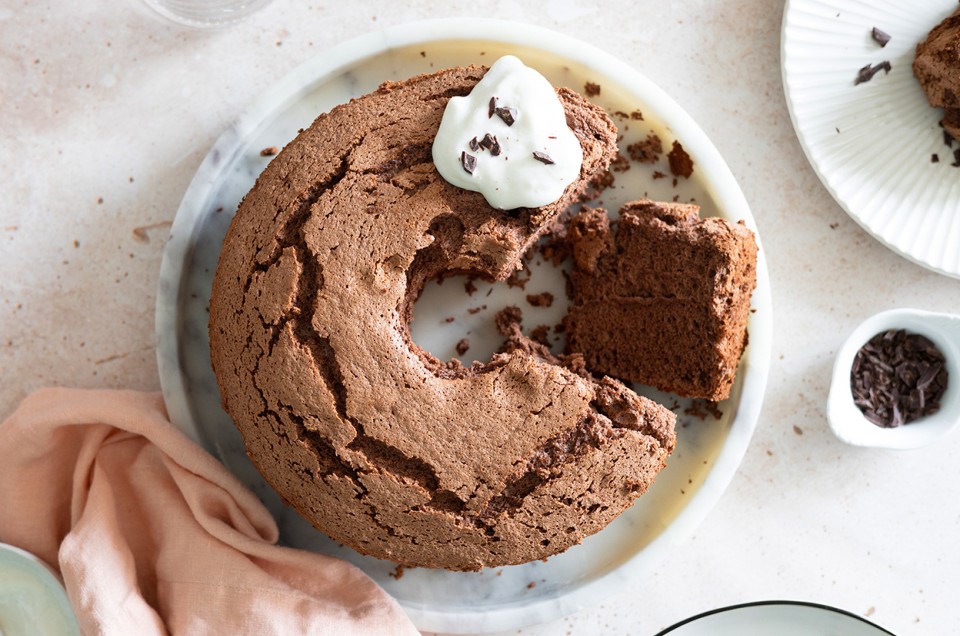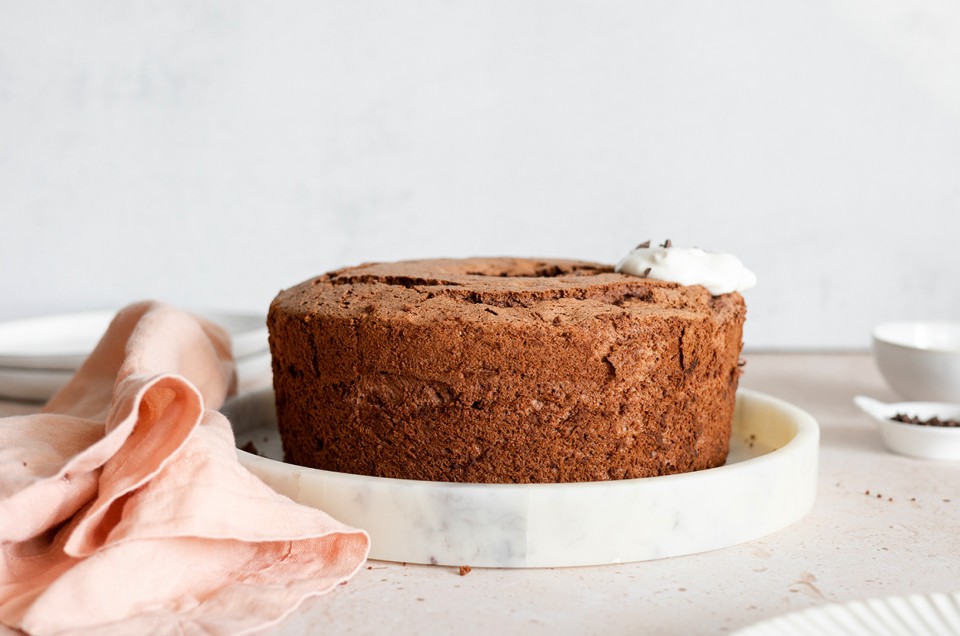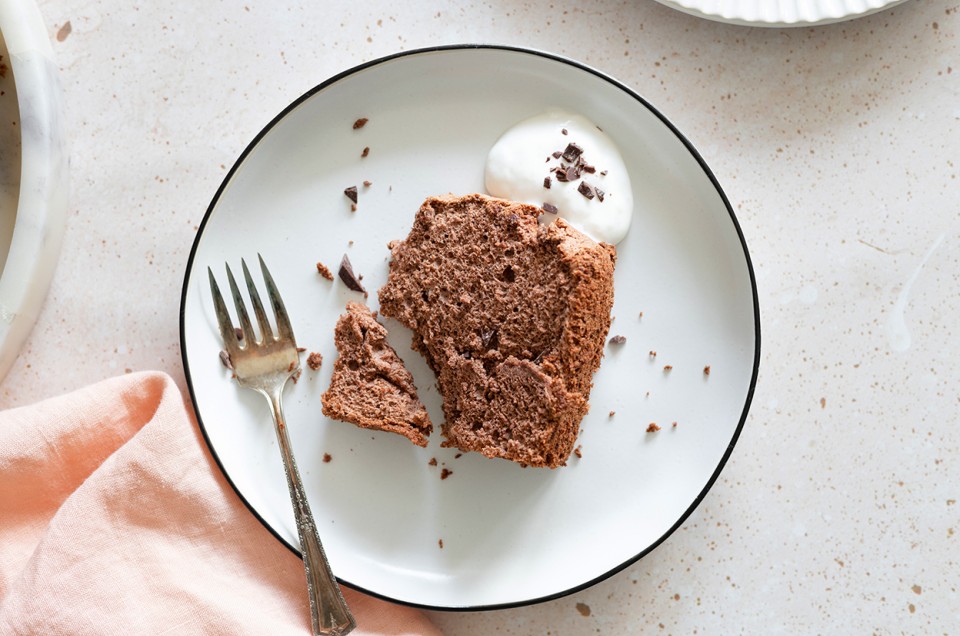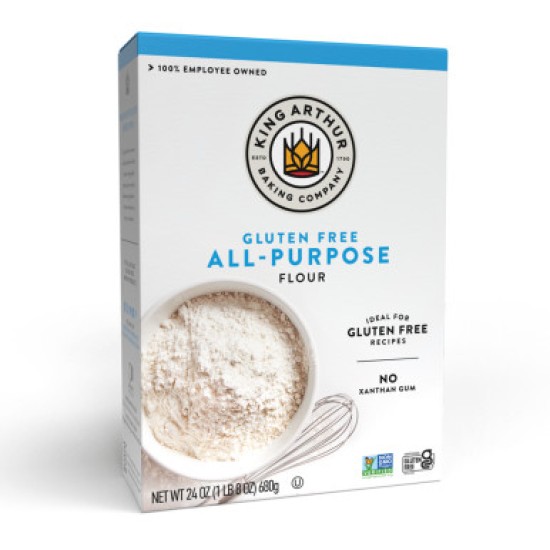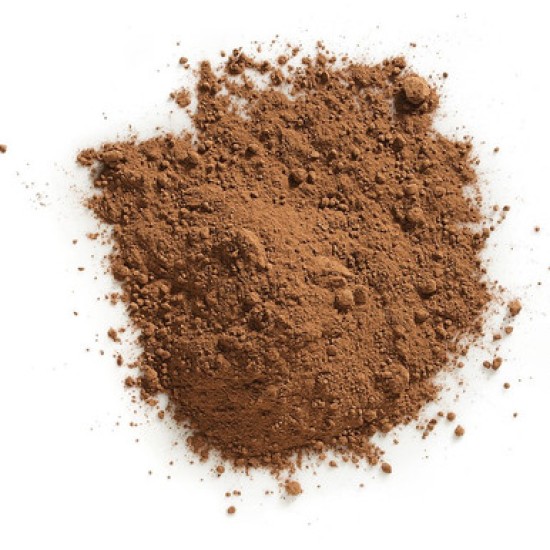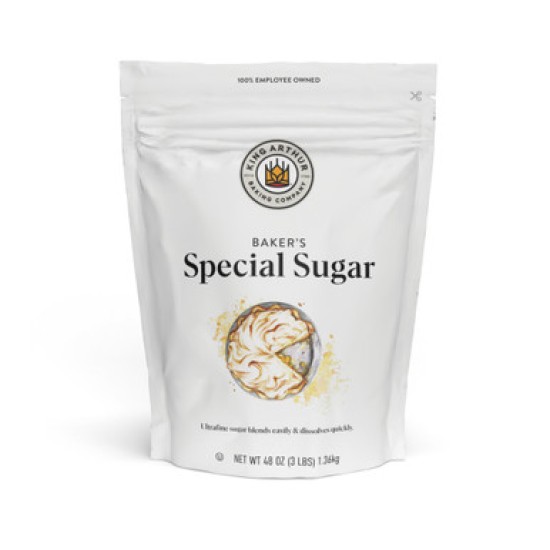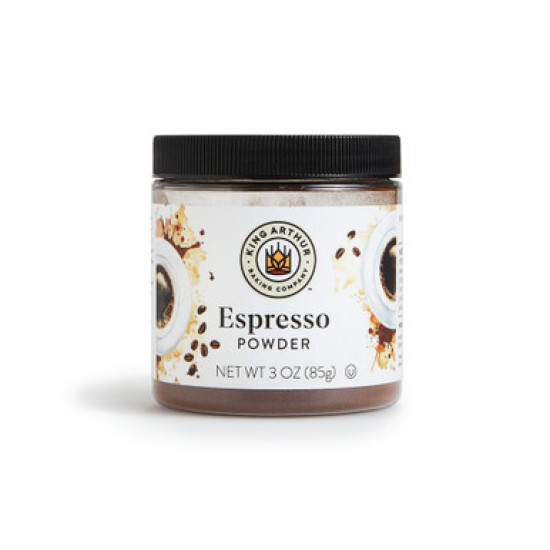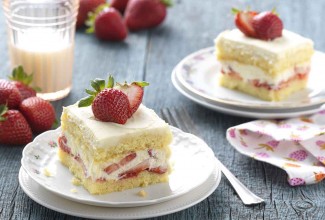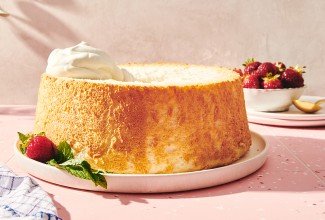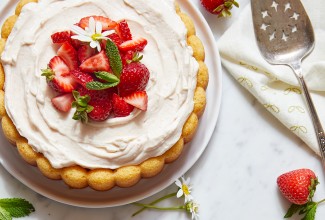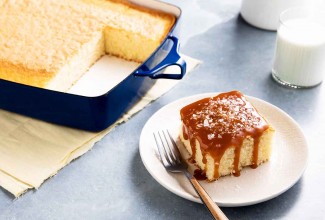-
Preheat the oven to 350°F and place the oven rack in its lowest position.
-
Whisk together and then sift the gluten-free flour, cocoa, cornstarch, 3/4 cup (143g) sugar, espresso powder or almond flavoring, and baking powder. Set aside.
-
In a large clean, grease free mixing bowl, beat the egg whites until foamy. Beat in the salt and cream of tartar.
-
Gradually increase the speed of the mixer, and beat until the egg whites have increased in volume and thickened significantly.
-
Gradually beat in 3/4 cup + 2 tablespoons (167g) sugar, a bit at a time, until the meringue holds soft peaks.
-
Gently fold in the sifted flour/sugar blend, 1/4 cup at a time, just until mostly blended. The cocoa makes it hard to blend in completely evenly, so leaving a slightly marbled effect is perfect.
-
Spoon the batter into an ungreased, 10" round angel food pan.
-
Bake the cake until the top springs back when pressed lightly, about 45 minutes.
-
Remove the cake from the oven and invert the pan onto the neck of a heatproof bottle or funnel, to suspend the cake upside down as it sets and cools, about 2 hours.
-
Remove the cake from the pan by running a thin spatula or knife around the edges of the pan, turning it over, and gently shaking the cake loose onto a serving plate.
-
Serve with whipped cream and chocolate sauce, if desired. Wrap any leftovers airtight, and store at room temperature.
